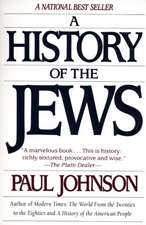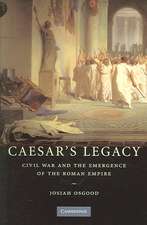The Battle of the Styles: Society, Culture and the Design of a New Foreign Office, 1855-1861
Autor Professor Bernard Porteren Limba Engleză Hardback – 16 mar 2011
Preț: 323.33 lei
Preț vechi: 456.39 lei
-29% Nou
Puncte Express: 485
Preț estimativ în valută:
61.88€ • 64.36$ • 51.08£
61.88€ • 64.36$ • 51.08£
Carte disponibilă
Livrare economică 24 martie-07 aprilie
Preluare comenzi: 021 569.72.76
Specificații
ISBN-13: 9781441167392
ISBN-10: 1441167390
Pagini: 256
Ilustrații: 20
Dimensiuni: 156 x 234 x 25 mm
Greutate: 0.58 kg
Editura: Bloomsbury Publishing
Colecția Continuum
Locul publicării:London, United Kingdom
ISBN-10: 1441167390
Pagini: 256
Ilustrații: 20
Dimensiuni: 156 x 234 x 25 mm
Greutate: 0.58 kg
Editura: Bloomsbury Publishing
Colecția Continuum
Locul publicării:London, United Kingdom
Caracteristici
Porter is an authority on British Imperial History.
Notă biografică
Bernard Porter is Emeritus Professor of Modern History, University of Newcastle, UK.
Cuprins
List of Illustrations \ Preface \ 1. The Battle Joined \ 2. A Hybrid Society \ 3. Early Skirmishes \ 4. A Grand and National Work \ 5. Worthy of Our Imperial City \ 6. The Lamp of Morality \ 7. An Architecture for our Age \ 8. Not the most Interesting Public Question of the Day \ 9. A Change for the Worse \ Conclusion \ Bibliography \ Index
Recenzii
'I'm glad I read it: I'm a little more knowledgeable about styles of architecture and their antecedents and I enjoyed the book more than was expected.'
'Porter tells this unedifying story in detail from the point of view of one interested in the British cultural, social and political contexts of the time, and he does so with zest...'
This is a curious, rather learned essay, and by no means an uninteresting one.
[a] lively account... [Porter's] sweep through the sources is extraordinarily wide... every possible angle on the commission and reception of this grand building is considered.
Author article mentioning book title in The Guardian.
In this full and detailed study Prof. Porter looks afresh at this debate and at the issues that lay behind it and gives us new insights, especially in the reaction to the Classicists' victory...
Porter provides an excellent concise account of the reasons for erecting a new Foreign Office plus the background to the international competition for the New Public Offices in Whitehall, as well as illustrations of the key designs... the new and remarkable feature of this book is Porter's analysis of how the Classical/ Gothic debate on architecture sheds light on the Victorian society of the day more generally.
Although this debate has been covered by others, Porter's aim is to broaden discussion of it into what he considers to be its rightful "context": Victorian society as a whole during the 1850s and 1860s. He generally tells this tale in a lively, engaging, and at times amusing fashion, bringing some new sources and insights to bear.
'Porter tells this unedifying story in detail from the point of view of one interested in the British cultural, social and political contexts of the time, and he does so with zest...'
This is a curious, rather learned essay, and by no means an uninteresting one.
[a] lively account... [Porter's] sweep through the sources is extraordinarily wide... every possible angle on the commission and reception of this grand building is considered.
Author article mentioning book title in The Guardian.
In this full and detailed study Prof. Porter looks afresh at this debate and at the issues that lay behind it and gives us new insights, especially in the reaction to the Classicists' victory...
Porter provides an excellent concise account of the reasons for erecting a new Foreign Office plus the background to the international competition for the New Public Offices in Whitehall, as well as illustrations of the key designs... the new and remarkable feature of this book is Porter's analysis of how the Classical/ Gothic debate on architecture sheds light on the Victorian society of the day more generally.
Although this debate has been covered by others, Porter's aim is to broaden discussion of it into what he considers to be its rightful "context": Victorian society as a whole during the 1850s and 1860s. He generally tells this tale in a lively, engaging, and at times amusing fashion, bringing some new sources and insights to bear.















